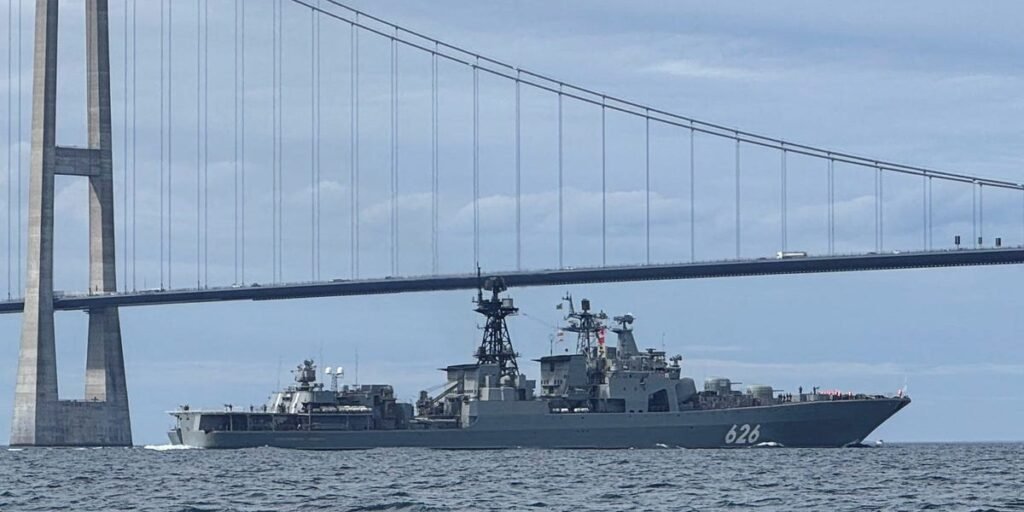NATO member Denmark said Russia has repeatedly threatened its warships and helicopters in its waters, including by pointing weaponry at them.
“We have seen several incidents in the Danish straits, where Danish air force helicopters and naval vessels have been targeted by tracking radars and physically pointed at with weapons from Russian warships,” Thomas Ahrenkiel, the director of the Danish Defense Intelligence Service (DDIS), said on Friday, Reuters reported.
The straits are strategic waters that control what enters and leaves the Baltic Sea, which is surrounded by NATO allies and Russia. The straits, which are also busy international shipping routes, would likely be key in a war.
Sean Gallup/Getty Images
Ahrenkiel said on Friday that Russian warships had sailed on collision courses with Danish ships in the straits and that a Russian warship had been anchored in Danish waters for over a week.
That ship, he said, could allow Russia to try to interfere if Denmark tried to hamper Russia’s “shadow fleet” of tankers, which it uses to evade Western sanctions.
The DDIS also said in a report on the same day that Russia is “conducting hybrid warfare against NATO and the West,” with actions including violating NATO airspace with drones and aircraft and cyber attacks.
Other NATO allies have also reported an increase in hybrid Russian activities since its full-scale invasion of Ukraine in 2022, including in the Baltic Sea.
The DDIS said Russia “highly likely sees itself as being in conflict with the West,” but said there was zero threat of conventional military attacks against Denmark.
It said there was a high threat of military provocations against NATO member states, a high threat of sabotage against Denmark’s armed forces, and a medium threat of destructive cyber attacks against the country.
NATO sees Russia’s activities as a test of its resolve and responses. They also allow Russia to gather intelligence on Western weaponry and response times.
The DDIS said Russia’s goal is to “weaken NATO’s political cohesion and decision-making capacity” with the aim of creating a “sustained state of uncertainty in which NATO’s cohesion is gradually undermined.”
Some NATO members have vowed to take a more robust response than they’ve taken in the past, but it’s a delicate balance: NATO doesn’t want to appear weak, but it also doesn’t want to risk strong Russian escalation. The DDIS, meanwhile, predicted an increase in Russia’s activities.

